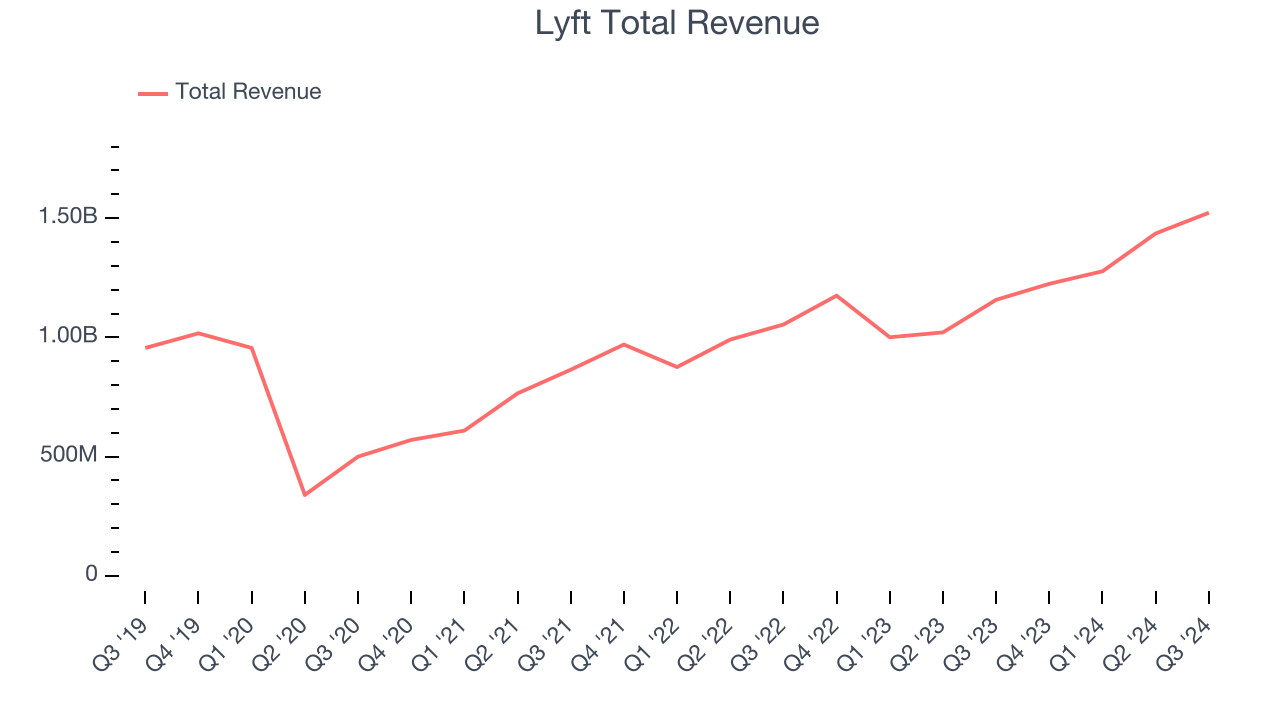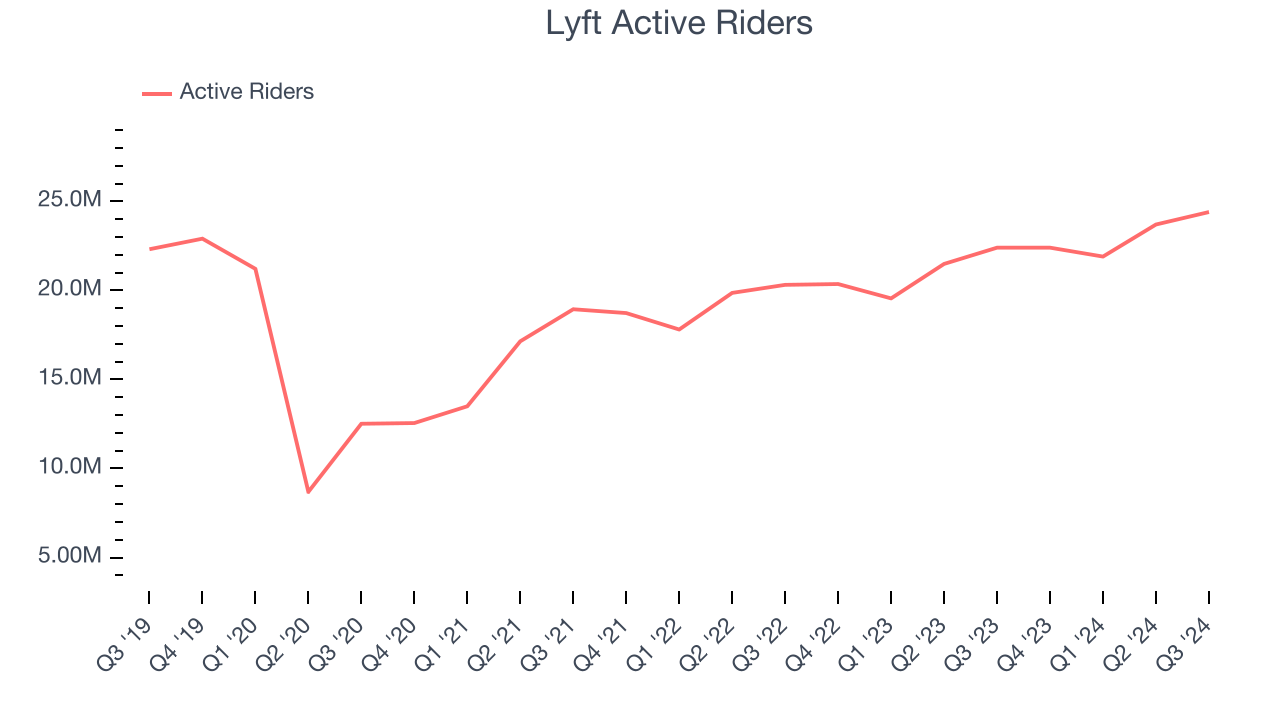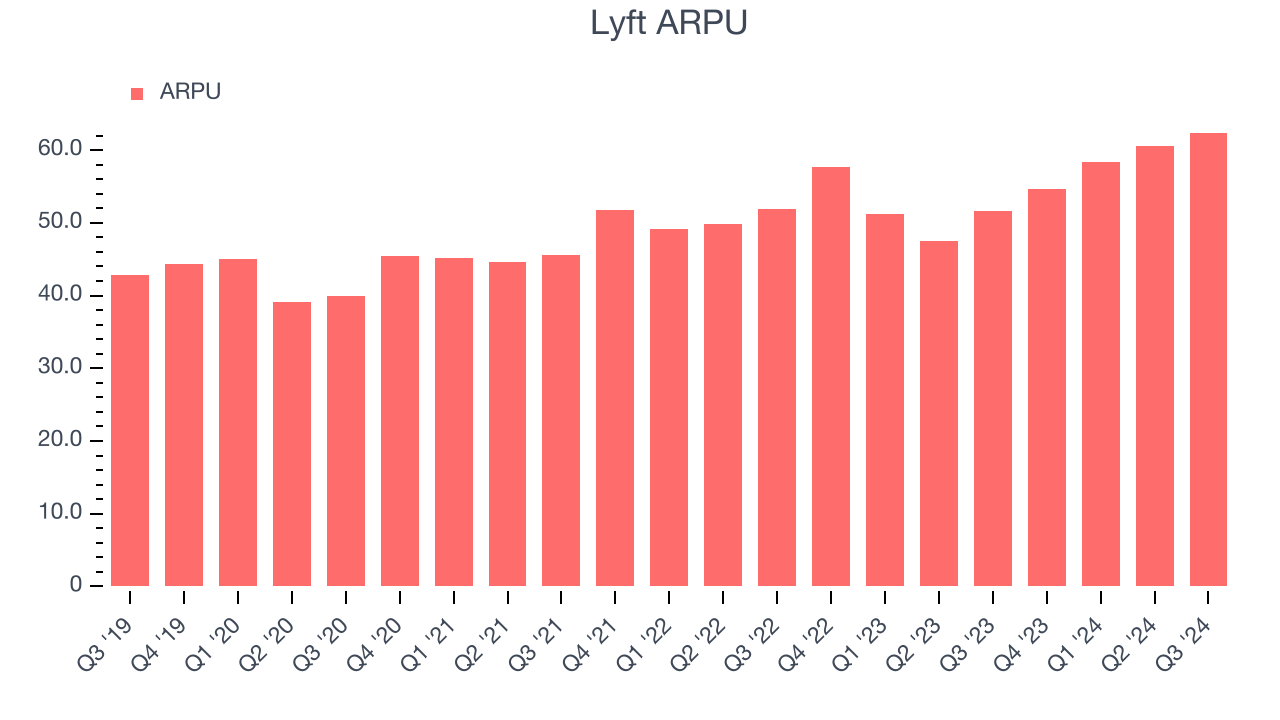Ride sharing service Lyft (NASDAQ: LYFT) reported Q3 CY2024 results exceeding the market’s revenue expectations, with sales up 31.5% year on year to $1.52 billion. Its GAAP loss of $0.03 per share was in line with analysts’ consensus estimates.
Is now the time to buy Lyft? Find out by accessing our full research report, it’s free.
Lyft (LYFT) Q3 CY2024 Highlights:
- Revenue: $1.52 billion vs analyst estimates of $1.44 billion (5.7% beat)
- EPS (GAAP): -$0.03 vs analyst estimates of -$0.03 (in line)
- EBITDA: $107.3 million vs analyst estimates of $94.24 million (13.9% beat)
- Gross Margin (GAAP): 41.7%, up from 34.1% in the same quarter last year
- Operating Margin: -3.7%, in line with the same quarter last year
- EBITDA Margin: 7%, in line with the same quarter last year
- Free Cash Flow Margin: 15.9%, down from 17.9% in the previous quarter
- Active Riders: 24.4 million, up 2 million year on year
- Market Capitalization: $5.66 billion
Company Overview
Founded by Logan Green and John Zimmer as a long-distance intercity carpooling company Zimride, Lyft (NASDAQ: LYFT) operates a ridesharing network in the US and Canada.
Gig Economy
The iPhone changed the world, ushering in the era of the “always-on” internet and “on-demand” services - anything someone could want is just a few taps away. Likewise, the gig economy sprang up in a similar fashion, with a proliferation of tech-enabled freelance labor marketplaces, which work hand and hand with many on demand services. Individuals can now work on demand too. What began with tech-enabled platforms that aggregated riders and drivers has expanded over the past decade to include food delivery, groceries, and now even a plumber or graphic designer are all just a few taps away.
Sales Growth
Reviewing a company’s long-term performance can reveal insights into its business quality. Any business can have short-term success, but a top-tier one sustains growth for years. Luckily, Lyft’s sales grew at an excellent 24.8% compounded annual growth rate over the last three years. This is encouraging because it shows Lyft’s offerings resonate with customers, a helpful starting point.

This quarter, Lyft reported wonderful year-on-year revenue growth of 31.5%, and its $1.52 billion of revenue exceeded Wall Street’s estimates by 5.7%.
Looking ahead, sell-side analysts expect revenue to grow 13.2% over the next 12 months, a deceleration versus the last three years. This projection is still noteworthy and indicates the market is baking in success for its products and services.
Unless you’ve been living under a rock, it should be obvious by now that generative AI is going to have a huge impact on how large corporations do business. While Nvidia and AMD are trading close to all-time highs, we prefer a lesser-known (but still profitable) semiconductor stock benefitting from the rise of AI. Click here to access our free report on our favorite semiconductor growth story.
Active Riders
User Growth
As a gig economy marketplace, Lyft generates revenue growth by expanding the number of services on its platform (e.g. rides, deliveries, freelance jobs) and raising the commission fee from each service provided.
Over the last two years, Lyft’s active riders, a key performance metric for the company, increased by 9.8% annually to 24.4 million in the latest quarter. This growth rate is solid for a consumer internet business and indicates people are excited about its offerings. 
In Q3, Lyft added 2 million active riders, leading to 8.9% year-on-year growth. The quarterly print isn’t too different from its two-year result, suggesting its new initiatives aren’t accelerating user growth just yet.
Revenue Per User
Average revenue per user (ARPU) is a critical metric to track for consumer internet businesses like Lyft because it measures how much the company earns in transaction fees from each user. This number also informs us about Lyft’s take rate, which represents its pricing leverage over the ecosystem, or "cut" from each transaction.
Lyft’s ARPU growth has been impressive over the last two years, averaging 8.4%. Its ability to increase monetization while quickly growing its active riders reflects the strength of its platform, as its users continue to spend more each year. 
This quarter, Lyft’s ARPU clocked in at $62.41. It grew 20.8% year on year, faster than its active riders.
Key Takeaways from Lyft’s Q3 Results
We were impressed by how significantly Lyft blew past analysts’ revenue and EBITDA expectations this quarter. We were also glad its gross margin improved. Overall, we think this was a good quarter with some key metrics above expectations. The stock traded up 18.1% to $17 immediately after reporting.
Lyft had an encouraging quarter, but one earnings result doesn’t necessarily make the stock a buy. Let’s see if this is a good investment. The latest quarter does matter, but not nearly as much as longer-term fundamentals and valuation, when deciding if the stock is a buy. We cover that in our actionable full research report which you can read here, it’s free.
